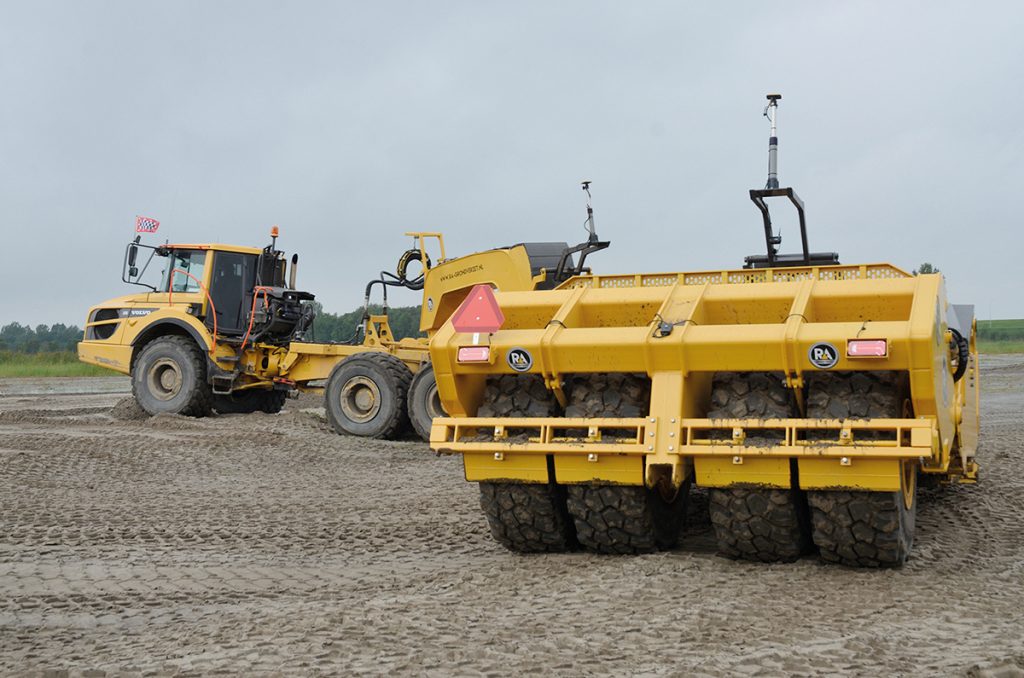![]()

The obvious visible difference from the outside is the lack of a skip and tipping cylinder, which they still have back at the yard but will probably never ever use again. The hydraulic oil supply and return hoses for the tipping ram are still in place, but are now split to power the scrapers, each of which are fitted with dedicated valve blocks.
The engineering challenge of the project was the connection point, or fifth wheel coupler, of the first scraper to the A30G. The AP15’s standard drawbar was removed and replaced for the newly-engineered swan-neck design, which sees the scraper’s 12.0-tonne standard weight increase to 15.0 tonnes.
Developed with input from the customer and AP, a lot of thought went into the attachment system to the chassis of the Volvo dumper.
Four forward facing ‘hooks’ welded to the chassis of the A30G secure the base of the swan neck drawbar. Disconnecting it is child’s play. All operator Benny needs to do is pull out a locking pin each side of the horizontal bar that secures the attachment frame.
With this bar slid to the side, a top link is then shortened. This action lowers the front part of the attachment frame into which the front two hooks are positioned.
The operator then inches backwards until the frame has left all four hooks and two hydraulic jacks (all done from the cab) at the front of the scraper are lowered to the ground to raise the front of the swan neck drawbar clear of the chassis. The last job is to disconnect the hydraulic hoses.
The hydraulic jacks are also worth a mention. The ability to alter the height of each one independently means that the leading scraper does not need to be dropped off on perfectly level concrete.























